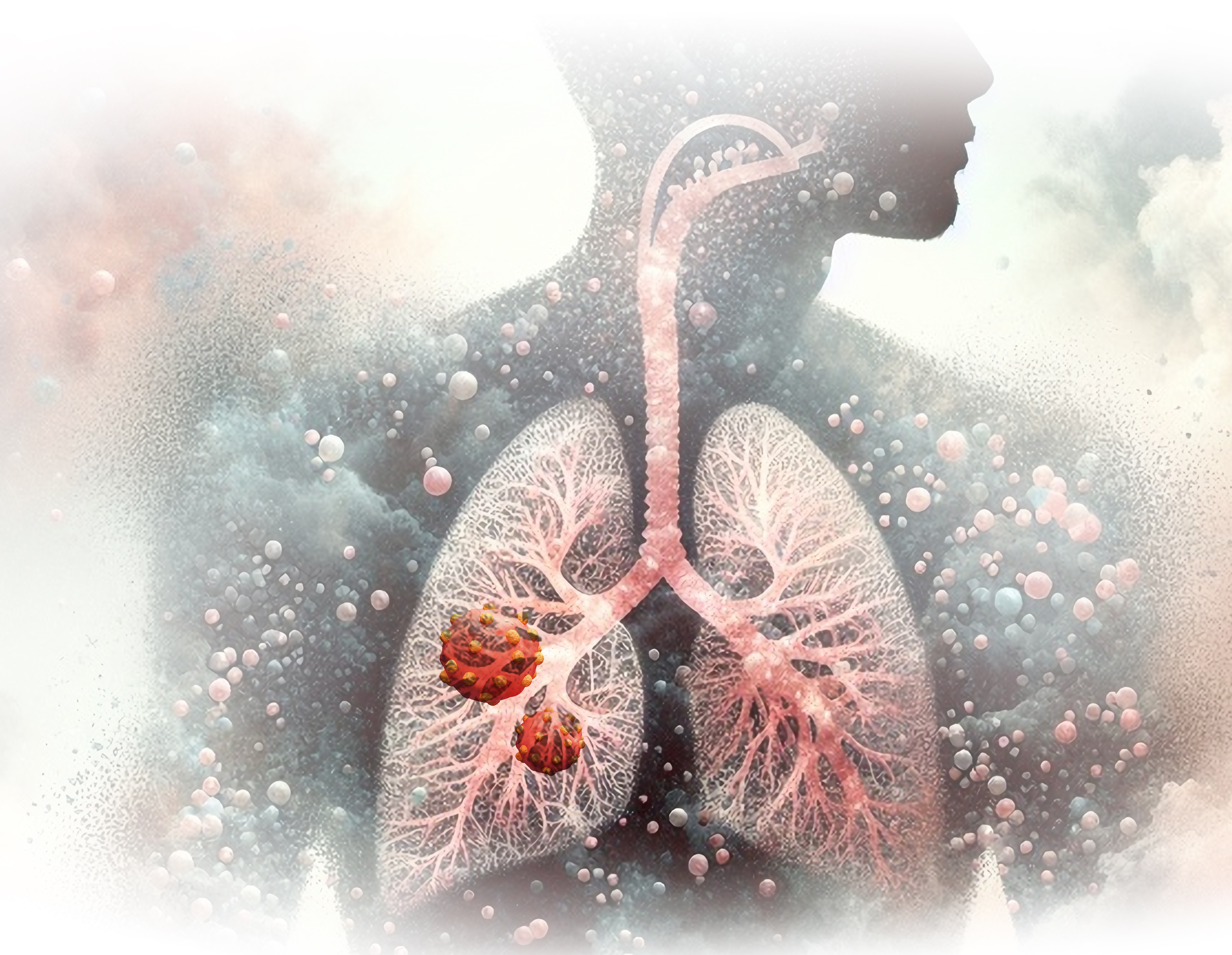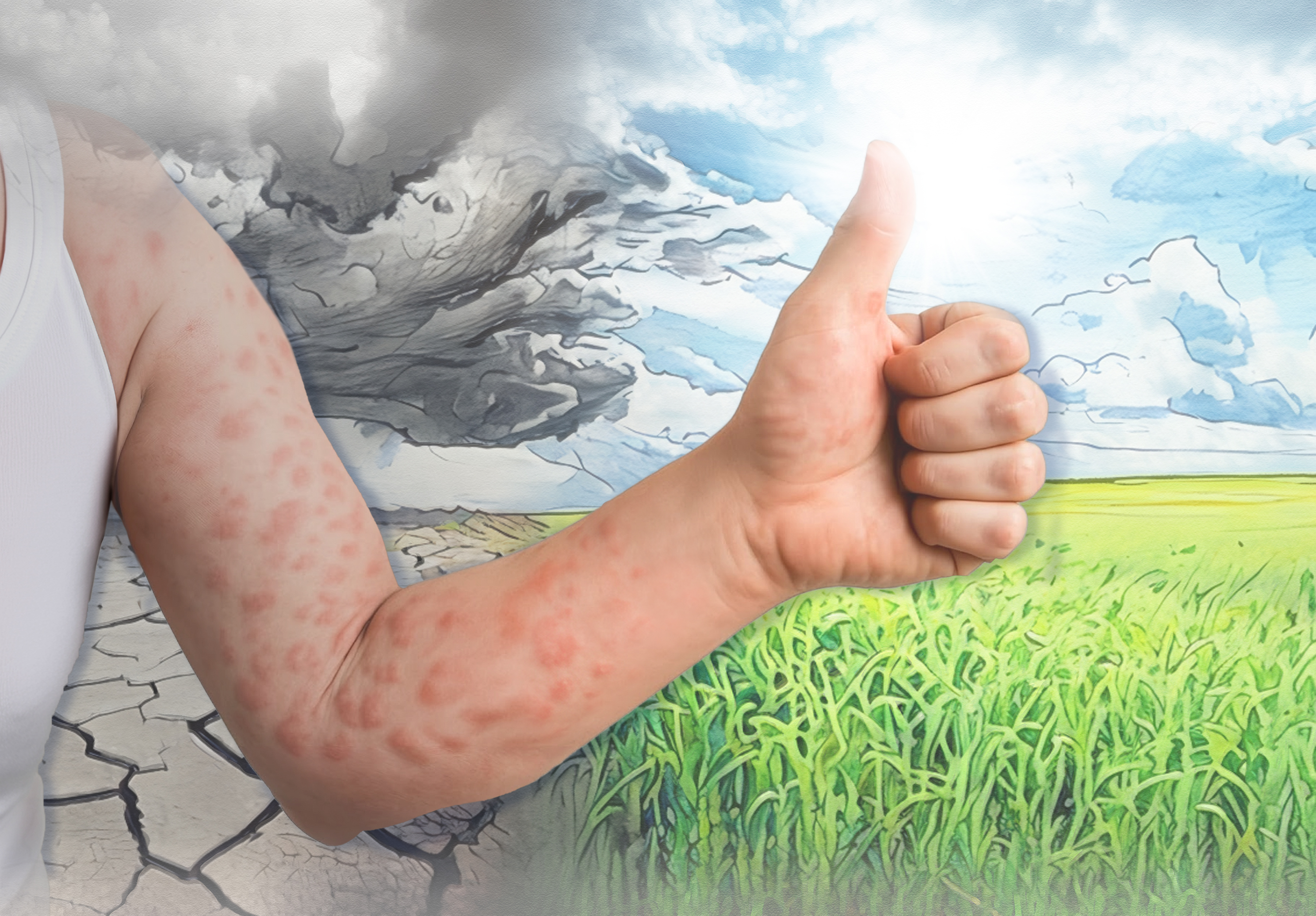
Seasonal influenza causes up to a billion infections, globally and approximately half a million deaths. Notably, 10% of seasonal influenza infection occurs in children under the age of 5 and due to poor uptake of the influenza vaccine, there has been a surge of influenza cases during the peak seasons. This article aims to discuss on issues related to poor uptake of influenza vaccine in children and ways to improve the disseminated information on influenza.
Each year, seasonal influenza causes up to a billion infections worldwide, up to 5 million severe cases, and approximately half a million deaths. Notably, approximately 10% of seasonal influenza infections occurs in children under the age of 5 with around 870,000 annual hospitalisations. Furthermore, children under the age of 2 are at high risk of influenza infection due to immature immune system. Interestingly, the prolonged viral shedding in children increases the risk of transmission to vulnerable family member, thus imposing significant cost to individuals and society1. Locally, the seasonal influenza is more common in periods from January to March/April and from July to August2. The admission rate increases greatly during the peak seasons and reaches up to high-intensity level of more than 8 per 10,000 population among children aged 0-5 years old in Hong Kong3. The pathogenic effects of influenza virus are promoted by its continuous evolution through the antigenic drift of its surface proteins haemagglutinin (HA) and neuraminidase. Remarkably, antigenic drift occurs on average 2-8 years in response to the host immune selection pressure and is most frequently seen in influenza A (H3N2), followed by influenza B and influenza A (H1N1)4.
Influenza virus typically spread via three modes of transmission, namely via droplet, contact and aerosol5. In relation to high health risk, annual immunisation with influenza vaccine is recommended for children ≥ 6 months of age, particularly in those with underlying medical conditions6. However, despite influenza vaccination is free and subsidised for individuals aged ≥65 years and children aged 6 months to under 6 years in Hong Kong, the uptake remains low (at only at 21%)3. The factors contributing to poor uptake of influenza vaccination were mainly related to the safety, and effectiveness of the vaccine. Nevertheless, seasonal influenza is an important health care issue in crowded cities such as Hong Kong where the already strained healthcare system continuously encounters a surge of influenza cases during the peak seasons3. The low influenza vaccination uptake among local population was explored further by Sun et al. (2018) in a study conducted in 8 focused groups, followed by telephone survey between March and April 2018 with 2,452 respondents (response rate of 41.4%). The study revealed that there was a high uptake of vaccine among children and older adults, suggestive of positive impact of subsidy and outreach programs. However, both the young and middle-aged adults tend to believe their own immunity was sufficient to fend of influenza, thus chose not to vaccinate against the disease3.
Poor uptake of influenza vaccine puts further strain on the local healthcare system...
Since children are particularly at risk for influenza-related complications, vaccination is often recommended; however, in most countries, vaccination coverage is not well reported and remains well below the World Health Organisation (WHO) target of 75%7. Many countries recommend the use of live attenuated influenza vaccine (LAIV) for children aged 2 years or older. The trivalent LAIV (LAIV-3) was licensed in the United States (U.S.) in 2003 and had received approval for use in the Europe since 20118. The quadrivalent formulation of LAIV (LAIV-4) subsequently replaced the LAIV-3, however, LAIV-4 was shown to be less effective in children infected with H1N1 strain of influenza A compared to inactivated influenza vaccine, according to a pooled analysis by Chung et al. (2019)9. The effectiveness of influenza vaccine against influenza-associated hospitalisation in children in Hong Kong during an influenza A (H3N2) epidemic in June to November 2023 was evaluated in a study by Murphy et al. (2024). The study included 3,183 children hospitalised with acute respiratory illness in Hong Kong with influenza A and B viruses detected in 528 (16.6%) children, among which 419 (79.4%) were influenza A (H3N2). The overall vaccine effectiveness against hospitalisation associated with any influenza virus infection was estimated 22.4% (95% confidence interval [CI]: -11.7%, 46.1%) and against influenza A (H3N2) specifically was 14.3 (95% CI: -29.2%, 43.2%)10.
Recently, a systematic review reported that vaccinated children are 43%-69% less likely to attend hospital for influenza compared to unvaccinated children11. The Advisory Committee of Immunisation Practices recommends that children aged <9 years receive 2 doses of influenza vaccine if they have never been vaccinated, with 1 dose considered sufficient in subsequent years. The rationale behind this was that 2 doses in the first year was mainly due to the fact that children of this age group may not yet have exposure to the natural influenza virus infections, there, may lack pre-existing antibodies against some or all influenza virus types/subtypes. Hence, for previously unvaccinated children, the first dose of influenza vaccine is to prime or stimulate the immune response, followed by a second dose to achieve a protective antibody response12. The differences between fully vaccinated (vaccinated with 2 doses or, if previously vaccinated those vaccinated with 1 dose) against influenza versus that of partial vaccination (recipient of 1 dose only) in preventing influenza-associated hospitalisation among children in Hong Kong has been evaluated by Chua et al. (2019)12. Data from 23,187 children aged <9 years admitted to the hospitals with acute respiratory illness from September 2011 through March 2019 demonstrated that the overall vaccine effectiveness (VE) was higher among fully vaccinated children compared to partially vaccinated children (73% vs 31%, respectively) (Figure 1)12. The influenza vaccination use was recently recommended by the American Academy of Pediatrics (AAP) 2024-2025 policy statement in view of the risk for hospitalisation and death from influenza among children13.
-2.jpg)
Figure 1: Vaccine effectiveness (VE) estimates for full and partial vaccination against influenza A (H1N1), A (H3N2), and B viruses separately, by age group12. CI, confidence interval.
Influenza vaccine is recommended by the American Academy of Pediatrics (AAP)
Considering parents are often the main healthcare decision makers for their young children, understanding parent perceptions towards influenza vaccination remains important for encourage uptake14. Interestingly, individuals from different countries have different perception towards the influenza vaccine as a survey carried out in England found that vaccine uptake was associated with parental perception that the influenza vaccine was effective, and their child was susceptible to influenza. Contrarily, the National Flu Survey in the United States (U.S.) suggested that parents’ perception that their child was not at risk for influenza or severe illness from influenza or severe illness from influenza was the most common reason for not vaccinating their children. Nevertheless, most of these studies on parental perceptions regarding child influenza vaccination are conducted in Western settings and may not be applicable to Asian setting14. The parental perception of Asian parents was explored in a study by Low et al. (2017) involving 332 parents of children aged 6 months to 5 years attending pre-schools in Singapore. The results showed that even though the parental knowledge on influenza, benefits of vaccination and willingness to vaccine was high, only 32% of children had ever received influenza vaccine. Furthermore, the study found that parents were more likely to vaccinate their children if it was recommended by the child’s doctor and if they felt well informed; thus, this study revealed that the healthcare professional play a pivotal role in influenza vaccination uptake14.
Similarly, other studies conducted in China revealed that the parental hesitancy towards seasonal influenza vaccine (SIV) for their children ranged from 34.1% to 43.2%. A study by Cao et al. (2024) evaluated reasons for parental hesitancy towards SIV for children in post-pandemic era through online survey of full-time adult factory workers in Shenzhen, China in December 2023. The analysis was based on 1,175 parents who have at least one child under the age of 18 years. Remarkably, the study reported that 37.1% of parents were hesitant to have their index child receive SIV with mothers exhibited lower parental hesitancy toward SIV compared to fathers (31.9% vs 41.3%; p<0.001). The study added that parents who receive more information on SIV were less reluctant to have their children vaccinated compared to those who received less information regarding SIV15. Some of the parental misconception to SIV include the concern of vaccine causing the actual flu and the believe that influenza is just a flu and will not harm their children regardless of vaccination16. The detrimental effects of influenza cannot be taken lightly as paediatric fatality due to influenza infection was recently reported in Hong Kong where an 8-year-old female developed fever and cough in April 2024 and deteriorated rapidly after her admission. She eventually passed away a day later and was noted to have no previous influenza vaccination17. This highlights the need for educational health campaigns to raise awareness and remove misconceptions regarding myths related to the influenza vaccines.
Healthcare providers play a pivotal role in influenza vaccine uptake...
References
1. Barbieri E, et al. Pediatr Infect Dis J 2023; 42(12): e440-e6. 2. Centre for Health Protection DoH. Seasonal Influenza. 2024. https://www.chp.gov.hk/en/features/14843.html (accessed 27/12/2024. 3. Sun KS, et al. Hum Vaccin Immunother 2020; 16(7): 1675-84. 4. Chan MCW, et al. Emerg Infect Dis 2018; 24(10): 1825-34. 5. Wolf RM, et al. Pediatr Rev 2023; 44(11): 605-17. 6. Munoz FM. Seminars in Pediatric Infectious Diseases 2002; 13(2): 72-8. 7. Garai R, et al. Journal of Translational Medicine 2024; 22(1): 903. 8. Kildegaard H, et al. The Lancet Child & Adolescent Health 2023; 7(12): 852-62. 9. Chung JR, et al. Pediatrics 2019; 143(2). 10. Murphy C, et al. Vaccine 2024; 42(8): 1878-82. 11. Belongia EA, et al. Lancet Infect Dis 2016; 16(8): 942-51. 12. Chua H, et al. J Infect Dis 2019; 220(10): 1568-76. 13. Recommendations for Prevention and Control of Influenza in Children, 2024-2025: Policy Statement. Pediatrics 2024; 154(4). 14. Low MSF, et al. Vaccine 2017; 35(45): 6096-102. 15. Cao H, et al. Vaccines (Basel) 2024; 12(9). 16. Nekrasova E, et al. Hum Vaccin Immunother 2020; 16(5): 1070-7. 17. Centre for Health Protection DoH. CHP investigates fatal case of paediatric influenza A infection. 2024. https://www.info.gov.hk/gia/general/202406/18/P2024061800506.htm (accessed 27/12/2024.





